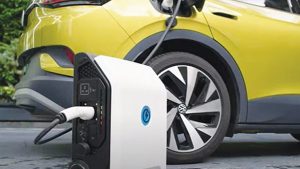It may not have enough electric vehicles, powerpacks or the capital, but India has found a way towards mass electrification: swap batteries.
The solution, where empty batteries can be exchanged for charged-up ones, is still in nascent stages in China, the world’s largest EV market, where it is anchored in strong government policy.
Elsewhere, it hasn’t quite taken off. But for India, it could help leap-frog the nation’s bid to reduce transport emissions and boost its electric footprint.
Across the Indian capital’s dense localities, battery swapping stations are becoming a frequent site at local provision stores and small retail outlets. Meanwhile, the government has pushed out an EV battery swapping policy draft in
recent months to bolster adoption and supply. It’s also scouting sites along India’s emission-heavy highways for new stations for swapping and charging.
For the most part, ambitious Indian startups have pushed their way forward. Sheru, a technology platform, allows electric autorickshaw drivers to swap batteries at retail stores or pay as they use them. It’s working with stakeholders across the energy storage value chain.
Meanwhile, Battery Smart, which just raised $25 million in a funding round led by Tiger Global, is focussed on quickly building a swapping network and is working with domestic battery manufacturers. Sun Mobility is partnering with Amazon India in the state of Maharashtra — home to the financial capital, Mumbai — to put swapping stations at its warehouses.
For now, it’s showing promise because the Indian vehicle market is dominated by two and three wheelers, making it simpler to charge and swap out the smaller powerpacks.
It brings down the costs of commute sharply for users while increasing
energy efficiency. These smaller vehicles are also responsible for a significant share of the emissions. This way could prove to be a model for other emerging markets across the world struggling to meet their green promises.
The policy draft, while a progressive step, will need to be backed by state governments and big bucks to be adopted in smaller, denser and more polluted second and third tier cities.
The longer-term challenge for India will be whether it can use battery swapping for cars effectively when mass adoption reaches the four wheeler category.
—Bloomberg
 The Gulf Time Newspaper One of the finest business newspapers in the UAE brought to you by our professional writers and editors.
The Gulf Time Newspaper One of the finest business newspapers in the UAE brought to you by our professional writers and editors.
